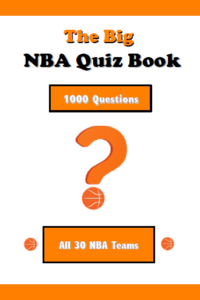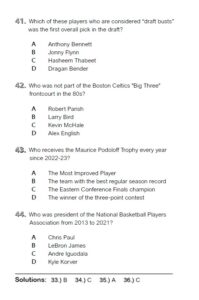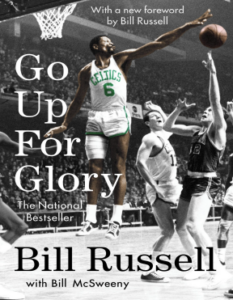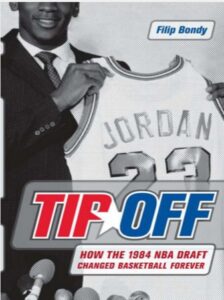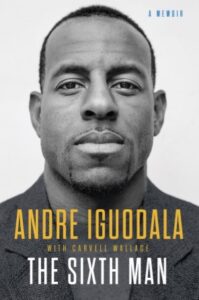After 7 Seconds or Less and Dream Team, Golden Days is the third book by the author Jack McCallum that I’m reviewing on this blog. Since I really enjoyed the other two books and included them in my personal top 10 of the best NBA books, I didn’t have to think twice about reading this one as well. The subtitle of Golden Days is West’s Lakers, Steph’s Warriors and the California Dreamers who reinvented basketball.
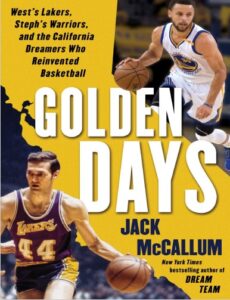
If you read the subtitle and see the cover of the book, you might wonder what the connection is between these topics. Or what exactly this book is about. The connection is Jerry West. NBA fans, of course, know West as a Lakers legend, both as a player and as a general manager. But he was also a consultant for the Golden State Warriors from 2011 to 2017 and even owned a small part of the franchise.
Golden Days tells the story of the 1972 Lakers and the 2017 Warriors
In Golden Days, Jack McCallum tells two different stories. In the Lakers part, he focuses specifically on the 1971-72 season, when the Lakers finally won the title with Jerry West and also set the NBA record for 33 consecutive wins in a season, which still stands today. The Warriors part is primarily about the 2016-17 season, the first season with Kevin Durant on the roster (and West’s last season as a consultant). However, this Warriors part is more general. The reader also learns a lot about the history of the Golden State Warriors and how the team with the young Stephen Curry became a multiple time NBA champion.
West also had a part in the Warriors’ success
Golden Days also examines West’s part in the Warriors’ development into the best team in the league in more detail. It becomes clear that he was more than just a name on the payroll. West took his role as a consultant very seriously and talked a lot with the owners, the front office, the coaching staff and the players. In his role as consultant, West was also involved in important decisions. For many fans it was a rather unpopular decision at the time to trade Monta Ellis and rely fully on Stephen Curry instead. From today’s perspective, it is almost unimaginable that Curry was viewed relatively critically at the beginning of his career. West also played a role in Kevin Durant’s decision to join the Warriors. The two spoke at length on the phone before that decision and Durant also mentioned West at his introductory press conference.
As far as the structure of the individual chapters in Golden Days is concerned, they alternate between the two themes of the book. First comes a chapter about West’s Lakers, then one about Steph’s Warriors. You learn more about Elgin Baylor’s decision to end his career during the season and right before the start of the historic streak (although there are still differing accounts of the real reasons). The book describes the winning streak of 33 games in great detail and there is a short match report for each game. You also learn more about Jerry West himself. Jack McCallum quotes West’s autobiography West by West (which he wrote together with author Jonathan Coleman) quite frequently here. I have already reviewed it on this blog and it is one of my favorite sports books of all time.
The third book by Jack McCallum is also a great one
McCallum not only draws his knowledge from books like West by West, he also spoke to West personally for this book. It becomes clear that West, for all his modesty, was quite bitter when the Warriors’ owners wanted to cut his salary. West then decided to leave the franchise altogether. At the end of the book, the author describes how West takes on a similar role with the Los Angeles Clippers instead. This was the last job of his long NBA career and the last one before his death.
The Warriors parts describe exactly what this franchise and the individual protagonists are all about. NBA fans can learn more about the development of the Warriors after the franchise was sold to Joe Lacob and Peter Guber. It also mentions what changed after Steve Kerr took over as head coach from Mark Jackson. As Golden Days was published in 2017, Kevin Durant was still playing for the Warriors at the end of the book. The Finals against the Raptors, Durant’s move to the Brooklyn Nets, the Warriors winning the title again in 2022 and Jerry West’s death were still in the future at the time.
Like the other two books by Jack McCallum, I really enjoyed Golden Days. As a fan of Jerry West, I’m always happy to read something about him anyway. But the part about Curry and the Warriors was also very interesting. Relatively new for me was the influence Jerry West really had on the development of the Warriors. It was bigger than I would have thought. I thought the idea of combining the Lakers from 1972 and the Warriors from 2017 into one book was a very good idea.
Get at AmazonThe button above is an affiliate link. If you order a book via this link, I will receive a small percentage of the purchase price as a commission. There are no additional costs for you.
